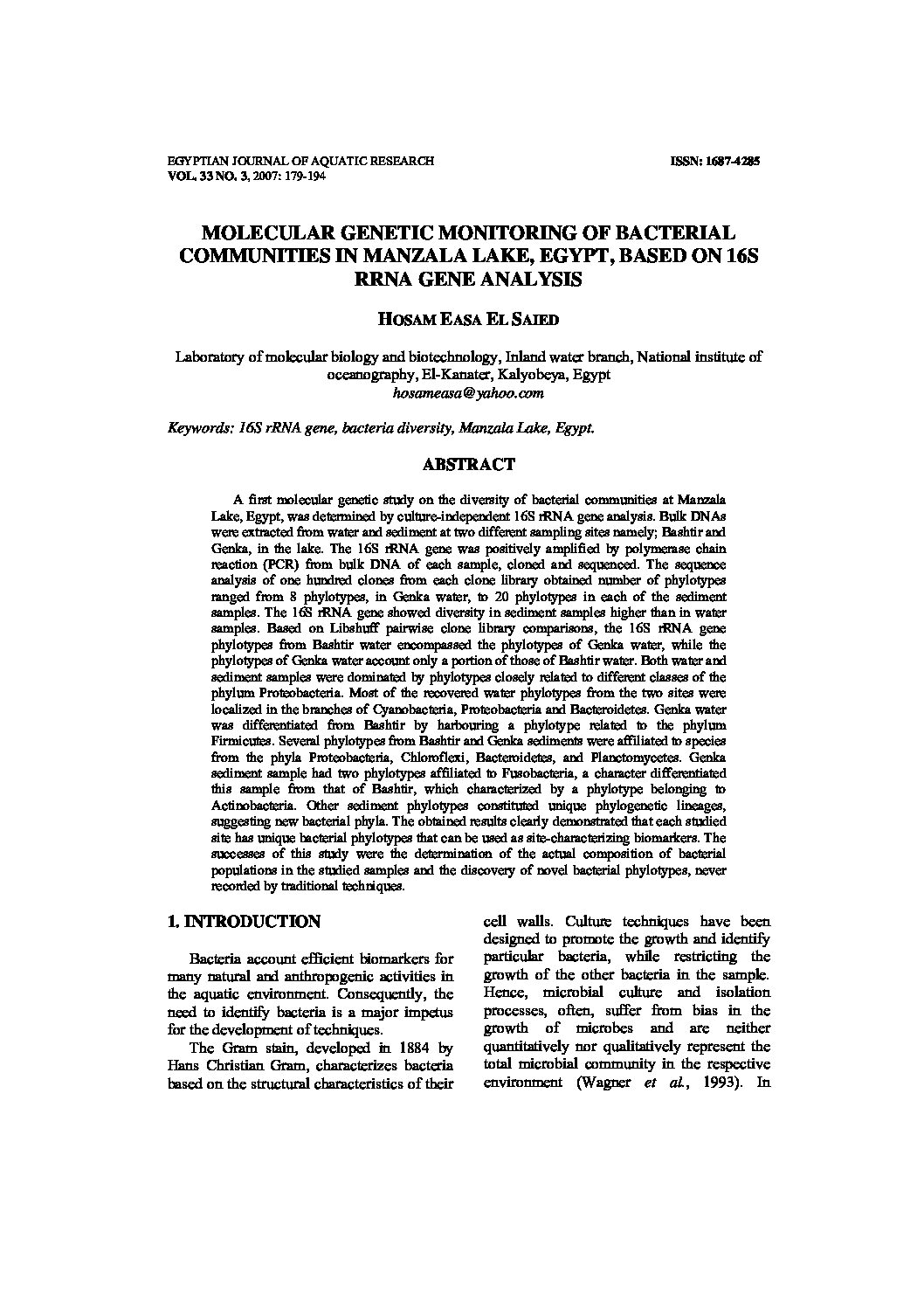Categories
vol-33MOLECULAR GENETIC MONITORING OF BACTERIAL
COMMUNITIES IN MANZALA LAKE, EGYPT, BASED ON 16S
RRNA GENE ANALYSIS
HOSAM EASA EL SAIED
Laboratory of molecular biology and biotechnology, Inland water branch, National institute of
oceanography, El-Kanater, Kalyobeya, Egypt
[email protected]
Keywords: 16S rRNA gene, bacteria diversity, Manzala Lake, Egypt.
ABSTRACT
A first molecular genetic study on the diversity of bacterial communities at Manzala
Lake, Egypt, was determined by culture-independent 16S rRNA gene analysis. Bulk DNAs
were extracted from water and sediment at two different sampling sites namely; Bashtir and
Genka, in the lake. The 16S rRNA gene was positively amplified by polymerase chain
reaction (PCR) from bulk DNA of each sample, cloned and sequenced. The sequence
analysis of one hundred clones from each clone library obtained number of phylotypes
ranged from 8 phylotypes, in Genka water, to 20 phylotypes in each of the sediment
samples. The 16S rRNA gene showed diversity in sediment samples higher than in water
samples. Based on Libshuff pairwise clone library comparisons, the 16S rRNA gene
phylotypes from Bashtir water encompassed the phylotypes of Genka water, while the
phylotypes of Genka water account only a portion of those of Bashtir water. Both water and
sediment samples were dominated by phylotypes closely related to different classes of the
phylum Proteobacteria. Most of the recovered water phylotypes from the two sites were
localized in the branches of Cyanobacteria, Proteobacteria and Bacteroidetes. Genka water
was differentiated from Bashtir by harbouring a phylotype related to the phylum
Firmicutes. Several phylotypes from Bashtir and Genka sediments were affiliated to species
from the phyla Proteobacteria, Chloroflexi, Bacteroidetes, and Planctomycetes. Genka
sediment sample had two phylotypes affiliated to Fusobacteria, a character differentiated
this sample from that of Bashtir, which characterized by a phylotype belonging to
Actinobacteria. Other sediment phylotypes constituted unique phylogenetic lineages,
suggesting new bacterial phyla. The obtained results clearly demonstrated that each studied
site has unique bacterial phylotypes that can be used as site-characterizing biomarkers. The
successes of this study were the determination of the actual composition of bacterial
populations in the studied samples and the discovery of novel bacterial phylotypes, never
recorded by traditional techniques.







